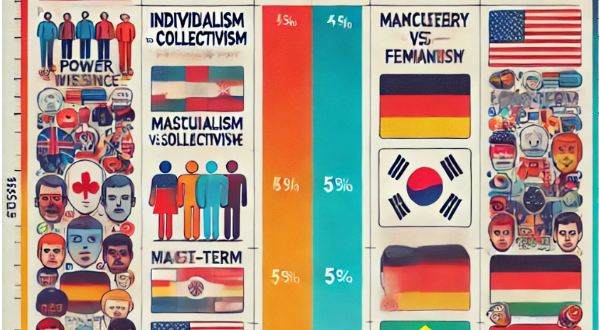In today’s interconnected global marketplace, businesses are increasingly looking beyond their borders to tap into new opportunities and expand their customer base. However, successfully reaching and engaging consumers across different cultures requires a nuanced understanding of diverse values, behaviors, and preferences. This comprehensive guide explores the critical considerations for developing effective cross-cultural marketing strategies, providing insights and practical advice for businesses aiming to thrive in international markets.
Understanding Cultural Dimensions
At the heart of cross-cultural marketing lies the ability to recognize and adapt to cultural differences. One of the most widely used frameworks for understanding these differences is Hofstede’s Cultural Dimensions Theory. This model identifies six key dimensions that vary across cultures:
- Power Distance: The extent to which less powerful members of society accept and expect unequal power distribution.
- Individualism vs. Collectivism: The degree to which people see themselves as independent or as part of a larger group.
- Masculinity vs. Femininity: The emphasis society places on achievement and success versus caring for others and quality of life.
- Uncertainty Avoidance: How comfortable a society is with ambiguity and uncertainty.
- Long-Term vs. Short-Term Orientation: The focus on future rewards versus present or past concerns.
- Indulgence vs. Restraint: The extent to which people try to control their desires and impulses.
Understanding these dimensions can provide valuable insights into consumer behavior and decision-making processes across different cultures. For example, marketing messages in collectivist societies might emphasize family and community benefits, while those in individualist cultures may focus on personal achievement and self-expression.
Consumer Behavior Across Cultures
Cultural factors significantly influence consumer behavior, from the products people buy to the way they make purchasing decisions. Here are some key areas where cultural differences can impact consumer behavior:
- Decision-making processes: In some cultures, decisions are made quickly and independently, while in others, they involve extensive consultation with family or community members.
- Brand loyalty: The importance of brand names and loyalty can vary greatly between cultures, with some placing high value on familiar brands and others being more open to trying new products.
- Price sensitivity: Cultural attitudes towards saving, spending, and debt can affect how consumers respond to pricing strategies.
- Product preferences: Cultural norms, values, and traditions often dictate which products are considered desirable or appropriate.
- Communication styles: The effectiveness of different advertising messages and mediums can vary widely across cultures.
Understanding these differences is crucial for developing effective marketing strategies that resonate with target audiences in different cultural contexts.
Developing Cross-Cultural Marketing Strategies
Creating successful cross-cultural marketing campaigns requires a thoughtful approach that balances global consistency with local relevance. Here are some key strategies to consider:
- Cultural Research and Segmentation: Invest in thorough research to understand the cultural nuances of your target markets. This may involve partnering with local experts or conducting in-depth market studies.
- Localization vs. Standardization: Determine which elements of your marketing mix should be standardized globally and which should be adapted to local preferences. This often involves a careful balance between maintaining brand consistency and catering to local tastes.
- Culturally Sensitive Communication: Ensure that your marketing messages, visuals, and overall brand communication are culturally appropriate and resonate with local audiences. This includes considering language translations, color symbolism, and cultural taboos.
- Leveraging Technology: Utilize data analytics and AI-powered tools to gain deeper insights into cultural preferences and consumer behavior patterns across different markets.
- Building Cultural Intelligence: Invest in training and development programs to enhance the cultural competence of your marketing teams and other customer-facing employees.
Case Studies: Lessons from Cross-Cultural Marketing Successes and Failures
Examining real-world examples of cross-cultural marketing campaigns can provide valuable insights into effective strategies and potential pitfalls. Here are two contrasting cases:
Success Story: McDonald’s in India McDonald’s successfully adapted its menu and marketing strategy to cater to local tastes and cultural preferences in India. The company introduced vegetarian options, removed beef from the menu to respect Hindu beliefs, and created locally inspired dishes like the McAloo Tikki burger. This approach allowed McDonald’s to establish a strong presence in a culturally diverse market while maintaining its global brand identity.
Cautionary Tale: Dolce & Gabbana in China In 2018, Dolce & Gabbana faced severe backlash in China over a marketing campaign that was perceived as culturally insensitive and racist. The campaign featured a Chinese model struggling to eat Italian food with chopsticks, accompanied by offensive narration. This misstep led to widespread boycotts and significant damage to the brand’s reputation in one of the world’s largest luxury markets.
These cases highlight the importance of cultural sensitivity and thorough research in cross-cultural marketing efforts.
The Future of Cross-Cultural Marketing
As the global marketplace continues to evolve, several trends are shaping the future of cross-cultural marketing:
- Increasing Diversity Within Markets: Many countries are becoming more culturally diverse, requiring marketers to develop nuanced strategies even within domestic markets.
- Rise of Global Digital Platforms: Social media and e-commerce platforms are creating new opportunities for cross-cultural engagement and requiring brands to navigate complex global-local dynamics.
- Emphasis on Authenticity and Social Responsibility: Consumers across cultures are increasingly valuing brands that demonstrate genuine cultural understanding and commitment to social issues.
- Personalization at Scale: Advancements in data analytics and AI are enabling more sophisticated personalization of marketing messages across cultural segments.
- Virtual and Augmented Reality: These technologies are opening up new possibilities for immersive cross-cultural experiences and product demonstrations.
Conclusion
Successful cross-cultural marketing requires a delicate balance of global strategy and local adaptation. By investing in cultural intelligence, thorough research, and thoughtful adaptation of marketing strategies, businesses can effectively navigate the complexities of diverse global markets. As the world becomes increasingly interconnected, the ability to communicate effectively across cultures will become an ever more critical competency for marketers and businesses alike.
Remember, cultural understanding is an ongoing process. Continuously seeking feedback, staying attuned to cultural shifts, and remaining open to learning are key to long-term success in cross-cultural marketing. By embracing these principles, businesses can build strong, authentic connections with consumers across diverse cultural landscapes, driving growth and fostering global brand loyalty.

For businesses looking to refine their approach to international markets, seeking expert guidance can be invaluable. Top pitch deck consulting services can help companies effectively communicate their cross-cultural marketing strategies to investors and stakeholders, ensuring that global expansion plans are well-articulated and compelling.








